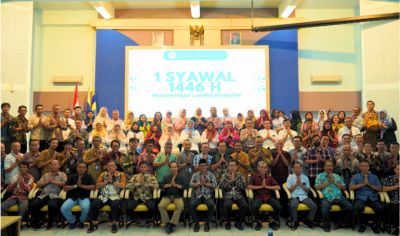ADITIYA CAHYA WARDANA
041514353018
Dosen Pembimbing
Prof.Ir. Suparno,MSIE.,Ph.D.
ABSTRACT
PT Petrokimia Gresik is one of 5 fertilizer producers incorporated in PT Pupuk Indonesia (Persero)’s group. As a holding company, PT Pupuk Indonesia is authorized by the government to determine the procurement and distribution of fertilizer subsidy in accordance with their respective working areas. This regulation is expected to increase the effectiveness and efficiency of procurement and distribution of subsidized fertilizer. Since January 1st, 2017,
PT Pupuk Indonesia issued a policy of change of working area in charge of fertilizer subsidy. The policy affects the reduction of work area for PT Petrokimia Gresik for certain provinces. In an effort to optimize the provision of fertilizer subsidies, PT Petrokimia Gresik cooperates with third parties to lease fertilizer storage facilities (warehouses) scattered throughout the territory of Indonesia. Policies that have an impact on reducing the above work areas have not been matched by an evaluation of the number of warehouses currently managed. The problems faced by the company are decreasing of warehouse utilization and the high logistic cost per product unit produced for the area experiencing the reduction of working area. West Java Province is the province with the greatest reduction of working area. Therefore the province of West Java was chosen as the unit of analysis in this study.
This research uses a quantitative approach to solve the problems faced by the company. Calculation of optimization through model development is done to get the lowest logistics cost. The model used mixed integer linear programming with combination of multi-source capacitated models, multi-product models and multi stage models. In addition, the optimization calculation can also be used to
evaluate the current buffer warehouse by looking at warehouse utilization. The
expected objective is to obtain logistical cost savings and increased utilization of warehouses to store fertilizer subsidies.
In a one-year cycle, conditions are divided into peak and normal season to take account of seasonal demand conditions. From the results of research on the observation area, it can be concluded that from the existing 8 warehouse there are
2 warehouses that do not need to be used again. The savings obtained from the termination of utilization of 2 warehouses amounted to Rp 734,424,000 per year. To support the solution, a sensitivity analysis of demand changes was conducted. The six warehouses are still able to accommodate the increase in demand up to a certain limit.
Keywords : Inventory, Facility Location Problem, Integer Programming.

























